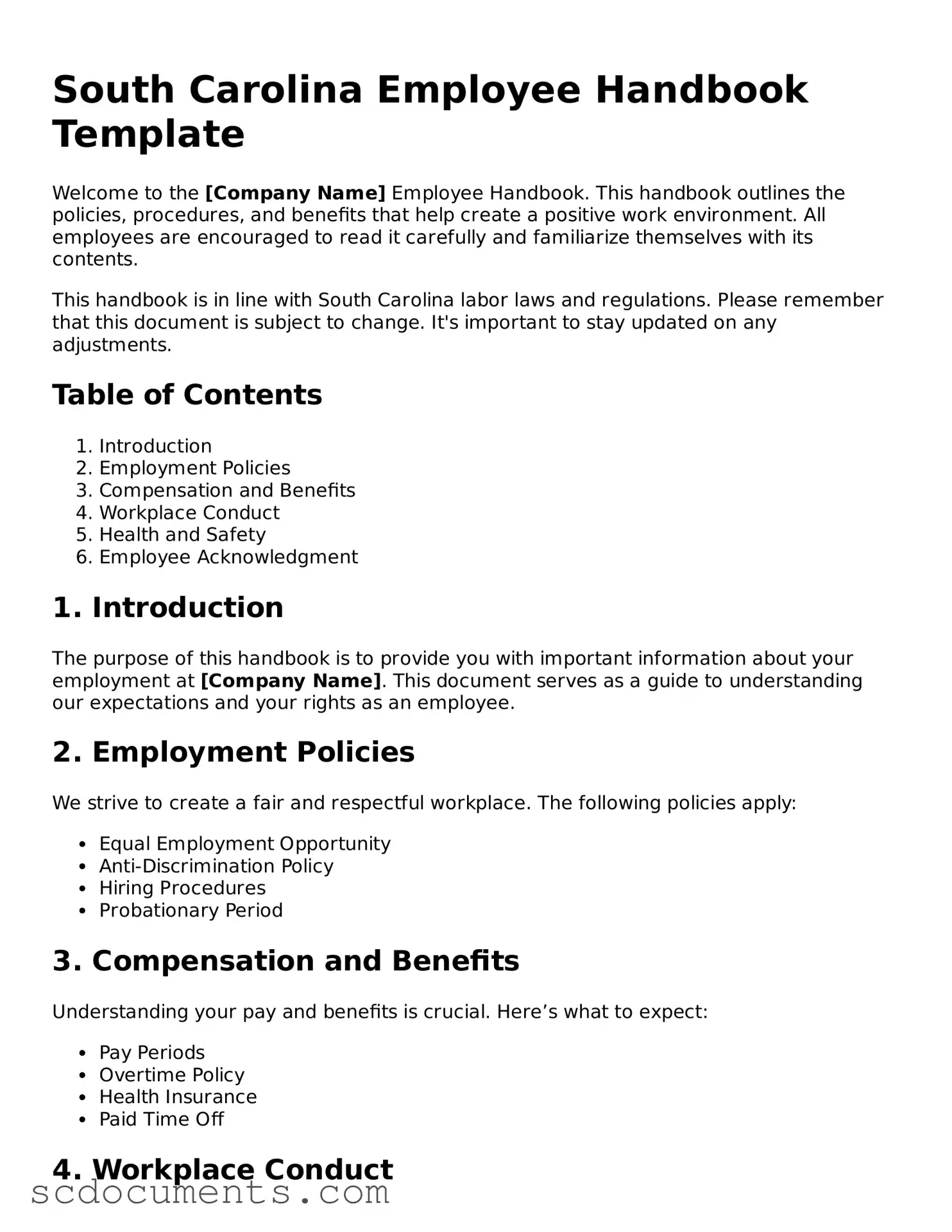Legal South Carolina Employee Handbook Form
The South Carolina Employee Handbook form is a crucial document that outlines the policies, procedures, and expectations for employees within a company. This form serves as a guide for both employers and employees, ensuring everyone is on the same page regarding workplace rules. Having a well-structured handbook can foster a positive work environment and promote clear communication.
Access My Employee Handbook
